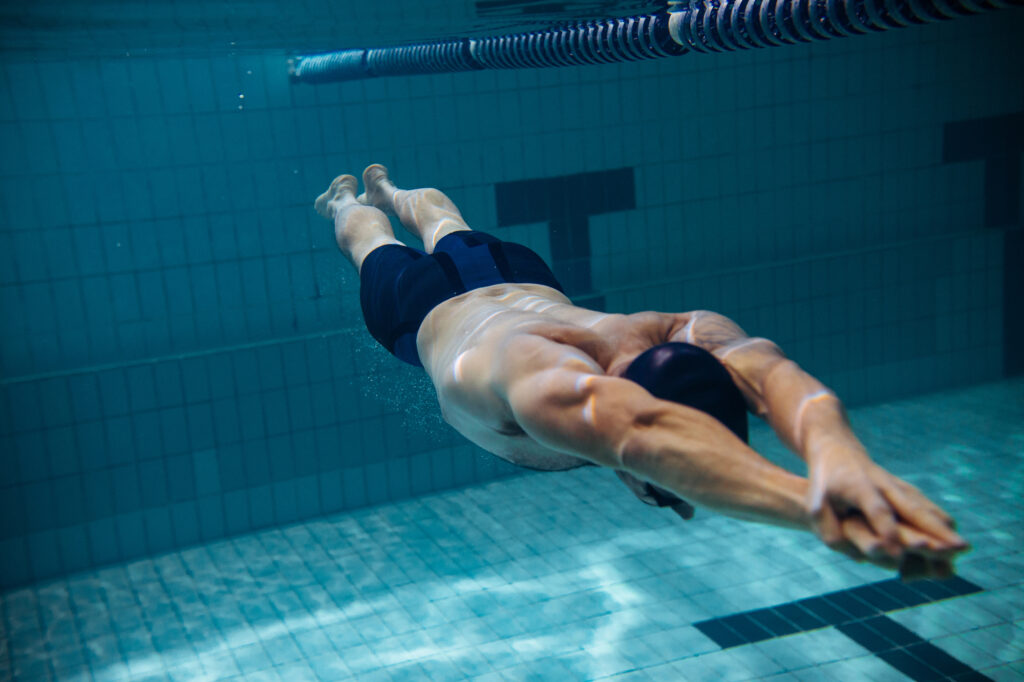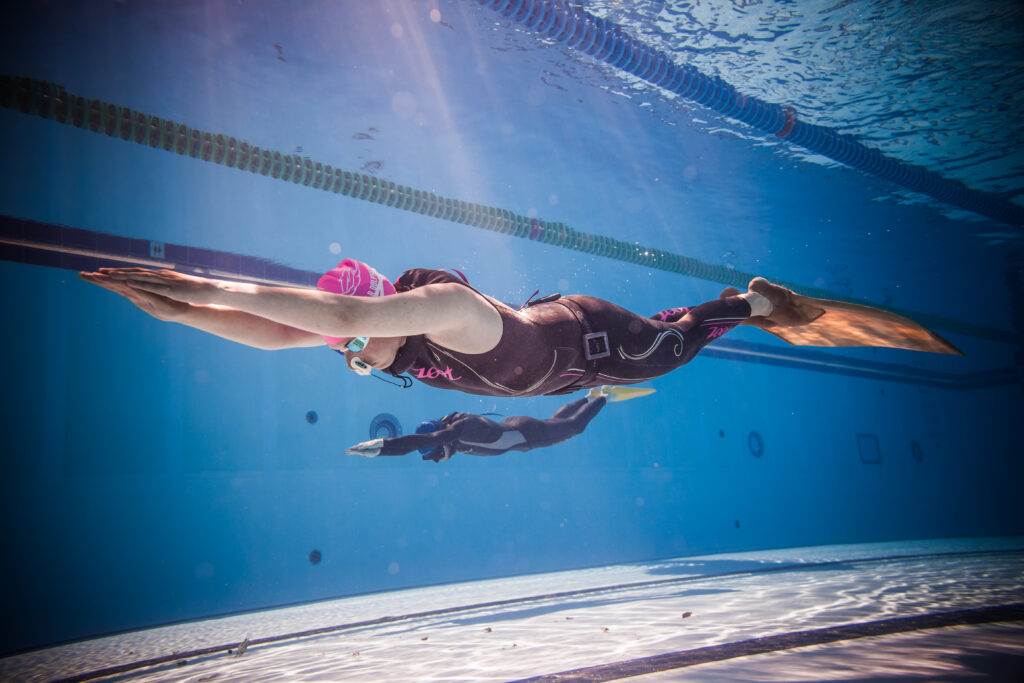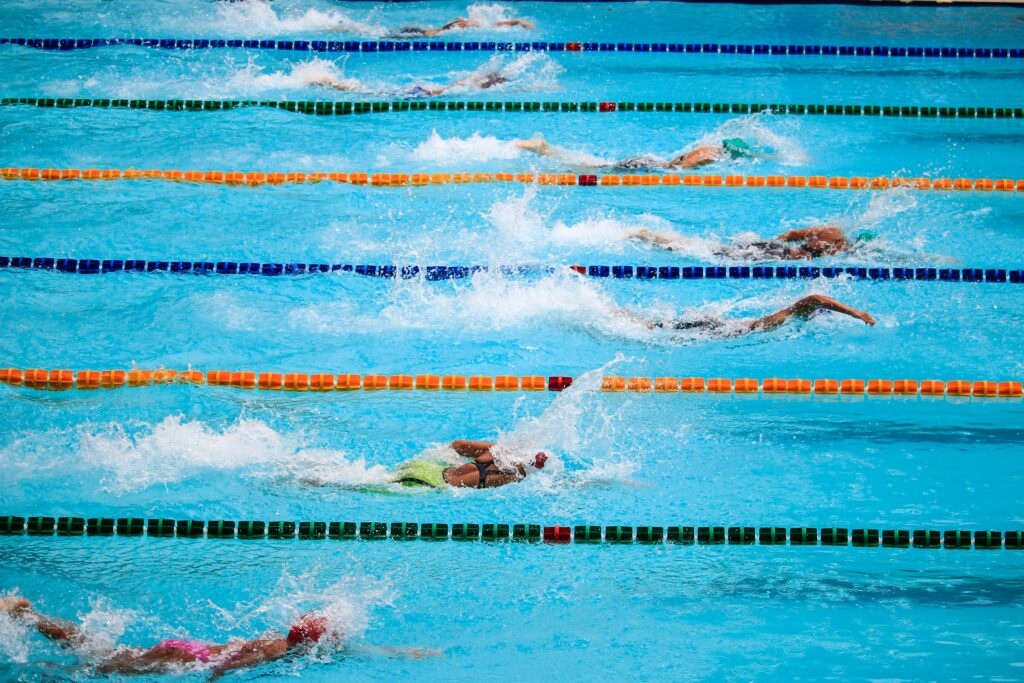Racing swim suits have become increasingly popular among competitive swimmers due to their ability to enhance performance in the water. But what makes these suits faster than traditional swim suits and shorts? In this article, we will explore the science behind racing swim suits and compare them to traditional swimwear to understand their advantages.
The design of racing swim suits is based on the concept of hydrodynamics, which refers to the study of fluid mechanics in motion. These suits are made of special materials that reduce drag and improve buoyancy, allowing swimmers to move faster through the water. In contrast, traditional swimwear is made of materials that absorb water, adding weight and resistance to the swimmer.
By reducing drag and improving buoyancy, racing swim suits can have a significant impact on a swimmer’s performance. In fact, studies have shown that wearing a racing swim suit can improve a swimmer’s speed by up to 5%. Additionally, these suits can help swimmers conserve energy, allowing them to swim longer distances without getting tired.
Key Takeaways
- Racing swim suits are designed to improve hydrodynamics, reduce drag, and improve buoyancy, allowing swimmers to move faster through the water.
- Compared to traditional swimwear, racing swim suits can improve a swimmer’s speed by up to 5% and help them conserve energy during longer swims.
- When considering purchasing a racing swim suit, it’s important to consider factors such as fit, material, and brand reputation.
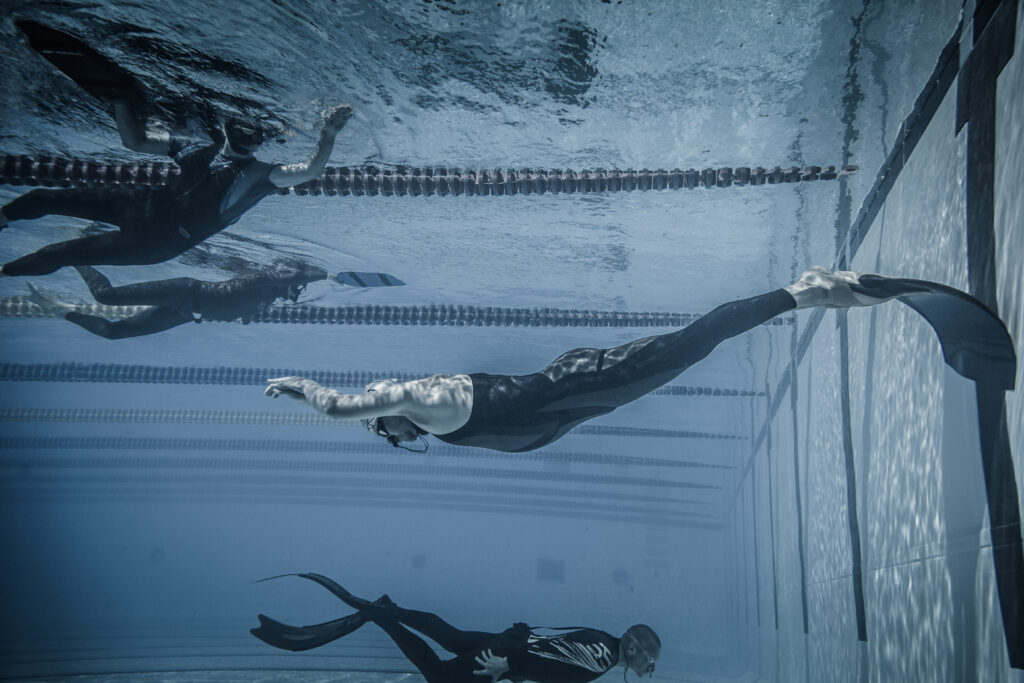
The Science Behind Racing Swim Suits
Racing swim suits are designed to reduce drag and increase buoyancy, which helps swimmers move through the water with greater speed and efficiency. These suits are made from advanced materials that are engineered to be faster than skin, and they are designed to compress the muscles and repel water.
The reduction in drag is a key factor in making racing swim suits faster than traditional swim suits and shorts. Drag is the force that opposes the motion of an object through a fluid, such as water. When a swimmer moves through the water, drag is created by the friction between the swimmer’s body and the water, as well as by the pressure differences that are created by the swimmer’s motion.
Racing swim suits are designed to reduce drag in several ways. First, the suits are made from materials that are more aerodynamic than skin, such as polyurethane or nylon. These materials are smoother and more slippery than skin, which reduces the friction between the swimmer and the water. Second, the suits are designed to compress the muscles, which reduces the amount of surface area that is exposed to the water. This reduces the amount of drag that is created by the swimmer’s body. Finally, the suits are designed to repel water, which reduces the amount of water that sticks to the swimmer’s body. This further reduces the amount of drag that is created by the swimmer’s motion.
The reduction in drag that is achieved by racing swim suits can have a significant impact on a swimmer’s performance. Studies have shown that racing swim suits can reduce the drag coefficient of a swimmer by up to 10%, which can translate into a significant improvement in speed. For example, a swimmer who is able to reduce their drag coefficient by 10% can swim the 100m freestyle in approximately 0.6 seconds faster than they would be able to without a racing suit.
In conclusion, the science behind racing swim suits is focused on reducing drag and increasing buoyancy. These suits are made from advanced materials that are designed to be faster than skin, and they are designed to compress the muscles and repel water. The reduction in drag that is achieved by these suits can have a significant impact on a swimmer’s performance, making them faster than traditional swim suits and shorts.
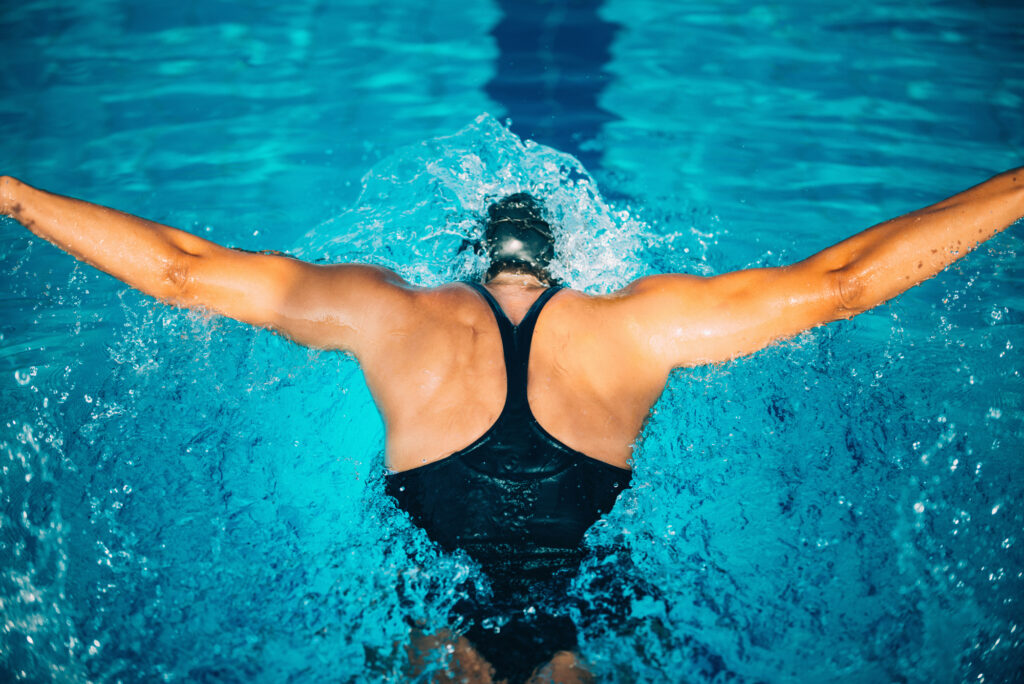
Comparison: Traditional Swim Suits and Shorts
When it comes to swimming, the type of swimwear you choose can have a significant impact on your performance in the water. In this section, we will compare traditional swim suits and shorts to racing swim suits to understand why the latter is faster.
Traditional Swim Suits and Shorts
Traditional swim suits and shorts are usually made of materials like nylon, polyester, or spandex. These materials are lightweight, comfortable, and quick-drying, making them ideal for recreational swimming. However, when it comes to competitive swimming, they fall short.
Traditional swim suits and shorts lack the compression and hydrodynamics required to reduce drag and improve speed in the water. They also tend to absorb water, which can add extra weight and resistance, slowing down the swimmer.
Racing Swim Suits
Racing swim suits, on the other hand, are specifically designed to enhance performance in the water. They are made of high-tech materials like polyurethane, which provides compression and reduces drag. The suits are also hydrodynamic, with a smooth surface that reduces friction and allows the swimmer to move through the water with less resistance.
Racing swim suits are also designed to fit tightly to the body, reducing drag and increasing the swimmer’s speed. They are often made with seamless construction, which eliminates any excess material that could cause drag.
In addition to their design, racing swim suits are also subject to strict regulations regarding their size and material. This ensures that all swimmers are competing on a level playing field and that no one has an unfair advantage.
Overall, while traditional swim suits and shorts are suitable for recreational swimming, they lack the necessary features to enhance performance in competitive swimming. Racing swim suits are specifically designed to reduce drag, increase speed, and provide compression, making them the better choice for competitive swimmers.

Advantages of Racing Swim Suits
Racing swim suits are designed to provide swimmers with a competitive edge over traditional swim suits and shorts. Here are some of the advantages of racing swim suits:
Hydrodynamic Design
Racing swim suits are designed to reduce drag and increase buoyancy, which helps swimmers move through the water with greater efficiency. The hydrodynamic design of racing swim suits is achieved through a combination of factors, including:
- Tapered seams and edges that reduce the surface area of the suit that comes into contact with the water.
- Streamlined shapes that reduce water resistance.
- Compression panels that help to support the muscles and reduce drag.
Material and Construction
Racing swim suits are made from advanced materials that are designed to be lightweight, durable, and hydrophobic. These materials include:
- Lycra: A stretchy, lightweight material that provides a snug fit and helps to reduce drag.
- Polyester: A durable, hydrophobic material that resists water absorption and helps to reduce drag.
- Carbon fibre: A lightweight, high-strength material that is used to reinforce key areas of the suit and provide additional compression.
The construction of racing swim suits is also designed to be as streamlined as possible, with minimal seams and panels to reduce drag.
Reduced Drag
One of the key advantages of racing swim suits is their ability to reduce drag. This is achieved through a combination of the hydrodynamic design, advanced materials, and streamlined construction of the suits. By reducing drag, racing swim suits enable swimmers to move through the water more efficiently, which can help to improve their speed and performance.
In conclusion, racing swim suits offer a range of advantages over traditional swim suits and shorts. Their hydrodynamic design, advanced materials, and reduced drag all contribute to their ability to help swimmers perform at their best in competition.
Impact on Performance
When it comes to racing swimwear, the impact on performance can be significant. Research has shown that the right racing suit can help swimmers reduce drag, compress muscles, and repel water, all of which can contribute to faster swim times.
One of the key factors that sets racing suits apart from traditional swimwear is the materials used. Racing suits are typically made from high-tech materials such as polyurethane, which can help to reduce drag by up to 4%. This is because the material is designed to repel water and create a smoother surface, which in turn helps to reduce resistance and improve speed.
Another factor that can impact performance is the design of the suit. Racing suits are often designed to be tighter and more form-fitting than traditional swimwear, which can help to compress muscles and improve circulation. This can help to reduce fatigue and improve endurance, allowing swimmers to perform at their best for longer periods of time.
Finally, the style of the suit can also play a role in performance. For example, full-body suits are often preferred by competitive swimmers as they provide greater coverage and can help to reduce drag even further. Open-back suits, on the other hand, are often preferred by swimmers who value comfort and freedom of movement.
Overall, the impact of racing swimwear on performance can be significant, and choosing the right suit is an important consideration for any serious swimmer. By opting for a suit that is designed to reduce drag, compress muscles, and repel water, swimmers can improve their speed and endurance, and ultimately achieve better results in the pool.
Speedo
Speedo is one of the most well-known brands in the world of swimming. They offer a wide range of racing swimwear, including tech suits that are designed to enhance performance. The Speedo LZR Racer Elite 2 is one of their most popular tech suits. It features a lightweight, water-repellent fabric that helps to reduce drag and increase speed. Additionally, the suit has a compressive fit that helps to support muscles and reduce fatigue. The suit also has bonded seams that help to reduce drag and increase comfort.
Arena
Arena is another popular brand in the world of swimming. They offer a range of racing swimwear that is designed to enhance performance. One of their most popular tech suits is the Arena Carbon Air 2. This suit features a unique carbon fiber construction that helps to provide compression and support. The suit also has a water-repellent coating that helps to reduce drag and increase speed. Additionally, the suit has a compressive fit that helps to support muscles and reduce fatigue.
TYR
TYR is a brand that is known for producing high-quality swimming gear. They offer a range of racing swimwear, including tech suits that are designed to enhance performance. The TYR Venzo is one of their most popular tech suits. It features a unique construction that is designed to provide compression and support. The suit also has a water-repellent coating that helps to reduce drag and increase speed. Additionally, the suit has a compressive fit that helps to support muscles and reduce fatigue. The suit also has a unique design that helps to reduce drag and increase speed.
Overall, these popular brands offer unique features that are designed to enhance performance in the water. Whether you are looking for a suit that provides compression, support, or reduces drag, these brands have something to offer.
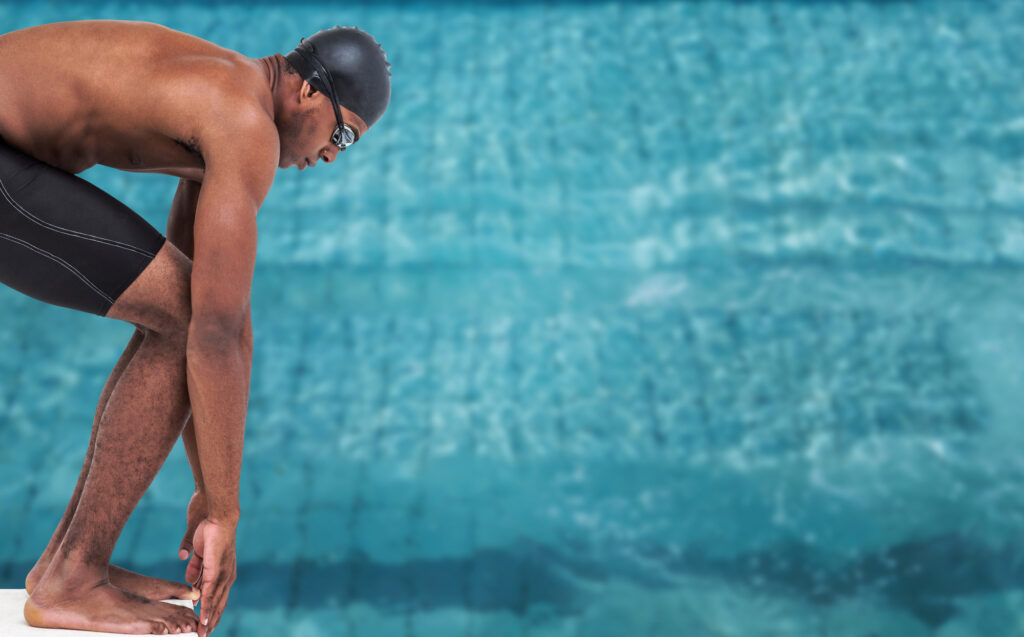
Considerations Before Buying a Racing Swim Suit
When looking for a racing swim suit, there are several factors to consider to ensure that you get the best one for your needs. Here are some of the key considerations to keep in mind:
Material
One of the most important factors to consider when buying a racing swim suit is the material it is made from. Most racing suits are made from a blend of materials, including polyester, spandex, and nylon. These materials are chosen for their ability to provide a tight, compression fit that reduces drag and improves performance in the water.
Fit
Another important factor to consider is the fit of the suit. Racing swim suits are designed to fit tightly to the body, providing a compression effect that helps to reduce drag in the water. It’s important to choose a suit that fits snugly without being too tight or restrictive. Some brands offer different styles of suits, such as those with a high neck or low back, so it’s important to try on a few different styles to find the one that works best for you.
Brand
There are many different brands of racing swim suits on the market, each with their own unique features and benefits. Some of the most popular brands include Speedo, Arena, TYR, and FINIS. It’s important to choose a brand that has a good reputation for quality and performance, and that offers suits that are designed specifically for racing.
Price
Racing swim suits can be quite expensive, with some high-end models costing several hundred pounds. It’s important to consider your budget when choosing a suit, and to look for a suit that offers good value for money. Keep in mind that a more expensive suit may not always be the best option, and that there are many affordable options available that can still provide excellent performance in the water.
Maintenance
Finally, it’s important to consider the maintenance requirements of the suit before making a purchase. Racing swim suits require special care to ensure that they last as long as possible, including rinsing them out after each use and avoiding exposure to chlorine and other harsh chemicals. Some suits may also require special washing instructions, so it’s important to read the care label carefully before washing.
Conclusion
In summary, racing swimsuits are designed to reduce drag and improve performance compared to traditional swimsuits and shorts. With advancements in technology, racing swimsuits have become increasingly innovative and effective at reducing drag.
The use of materials such as silk, nylon, and polyester has allowed racing swimsuits to be tighter and more compressive, which in turn reduces drag and improves hydrodynamics. Additionally, the use of sharkskin-like materials has been shown to reduce drag by up to 10%.
Furthermore, the design of racing swimsuits is also important in reducing drag. Features such as bonded seams, laser-cut edges, and compression panels all contribute to a more streamlined and efficient swim.
However, it is important to note that racing swimsuits are not a magic solution to improving performance. Proper training, technique, and conditioning are still crucial factors in achieving success in swimming competitions.
Overall, racing swimsuits are a valuable tool in the quest for faster swimming times. By reducing drag and improving hydrodynamics, they allow swimmers to reach their full potential in the water.

Frequently Asked Questions
What is the difference between racing swimsuits and traditional swimwear?
Racing swimsuits are designed to reduce drag and improve the swimmer’s speed. They are made of high-tech materials that repel water and compress the body. Traditional swimwear, on the other hand, is made of materials that are comfortable and durable for everyday use.
Which competitive swimwear brands offer the fastest swimsuits?
There are several competitive swimwear brands that offer fast swimsuits. Some of the most popular brands are Speedo, Arena, TYR, and FINIS. These brands use advanced materials and technology to create suits that reduce drag and improve performance.
Are there any banned racing swimsuits in the Olympics?
Yes, there are banned racing swimsuits in the Olympics. In 2010, FINA (the international governing body for swimming) banned non-textile swimsuits, such as those made of polyurethane. Swimmers are now required to wear swimsuits made of textile materials.
What makes tech suits so expensive compared to regular swimsuits?
Tech suits are expensive because they are made of advanced materials and technology. They are designed to reduce drag and improve performance, and are made of materials that are water-repellent and compress the body. The cost of research and development, as well as the cost of manufacturing, also contribute to the high price of tech suits.
How do racing swimsuits enhance performance in breaststroke?
Racing swimsuits enhance performance in breaststroke by reducing drag and improving the swimmer’s body position in the water. The compression of the suit helps to keep the swimmer’s body streamlined and reduce resistance. This can lead to faster times and better performance in breaststroke.
What materials are used to make the fastest racing swimsuits?
The fastest racing swimsuits are made of advanced materials such as polyurethane, elastane, and nylon. These materials are water-repellent and compress the body, reducing drag and improving performance. Some suits also feature carbon fiber or other high-tech materials to further enhance performance.

